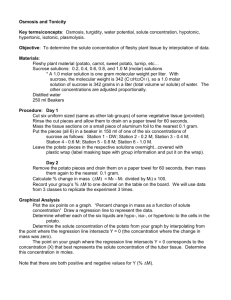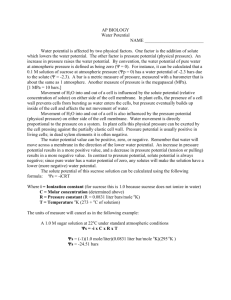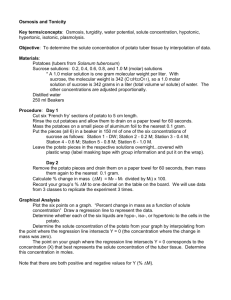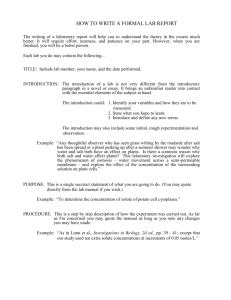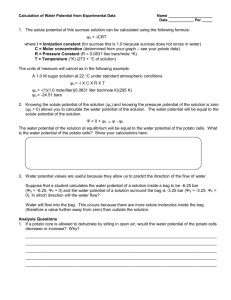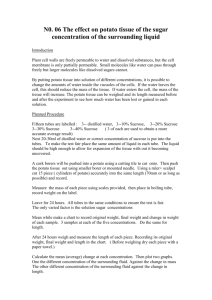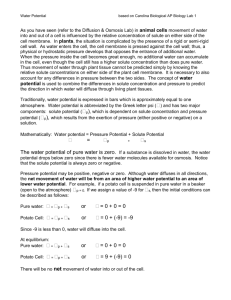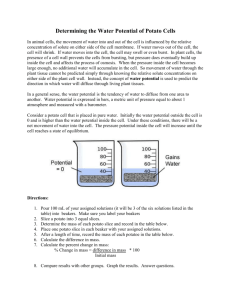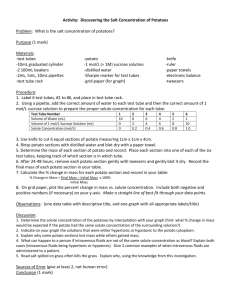Water Potential Explained: A Simple Guide
advertisement
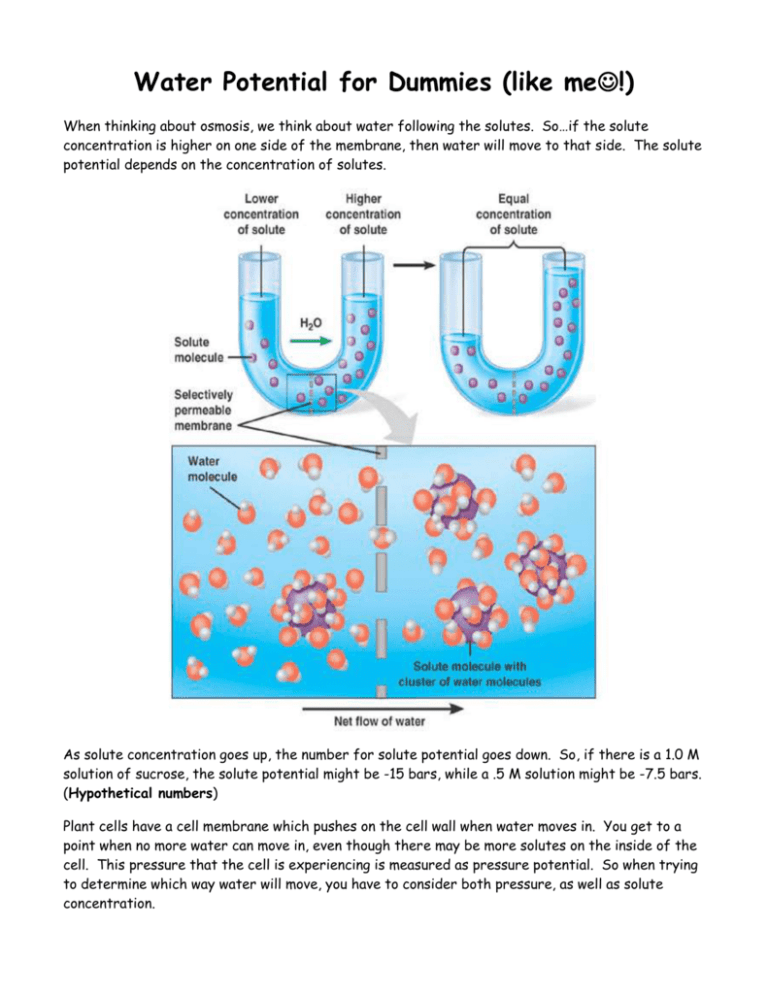
Water Potential for Dummies (like me!) When thinking about osmosis, we think about water following the solutes. So…if the solute concentration is higher on one side of the membrane, then water will move to that side. The solute potential depends on the concentration of solutes. As solute concentration goes up, the number for solute potential goes down. So, if there is a 1.0 M solution of sucrose, the solute potential might be -15 bars, while a .5 M solution might be -7.5 bars. (Hypothetical numbers) Plant cells have a cell membrane which pushes on the cell wall when water moves in. You get to a point when no more water can move in, even though there may be more solutes on the inside of the cell. This pressure that the cell is experiencing is measured as pressure potential. So when trying to determine which way water will move, you have to consider both pressure, as well as solute concentration. Putting it all together…Water potential is the tendency of water to move from one area to another. In order to calculate water potential, you have to consider both solute potential and pressure potential. Water potential is zero if there are no solutes dissolved in the water. Let’s say your potato cells contain the solute sucrose. As the concentration of sucrose increases in the cell, the amount of free water decreases, so the water potential goes down because there is not a lot of free water that can leave the cell. Now let’s say you put your first potato cells into pure water. Because there are no solutes in pure water, the water potential is zero. So, where is there more free water, inside the potato cell or outside of the potato cell? So, where will the water move? (Remember, water moves from a higher potential to a lower, because higher potentials have more potential to move because there are more free water molecules.) So, how in the world do you calculate solute potential? Well, you can perform an experiment with potato cells and sucrose. You can soak potatoes in various molarities of sucrose. Next, figure out when there is no gain or loss of water from the potato cells. At this point, the cells are in equilibrium because the sucrose in the cells and outside of the cells is equal. Then, plug this value into the following equation: s = -iCRT i= ionization constant (1.0 for sucrose, 2.0 for NaCl, 3.0 for CaCl2) C= molar concentration of sucrose per liter at equilibrium (get this from the graph) R= pressure constant (.0831 liter/bar/mole K) T= temperature of the solution in kelvins (add our classroom temperature to 273)
